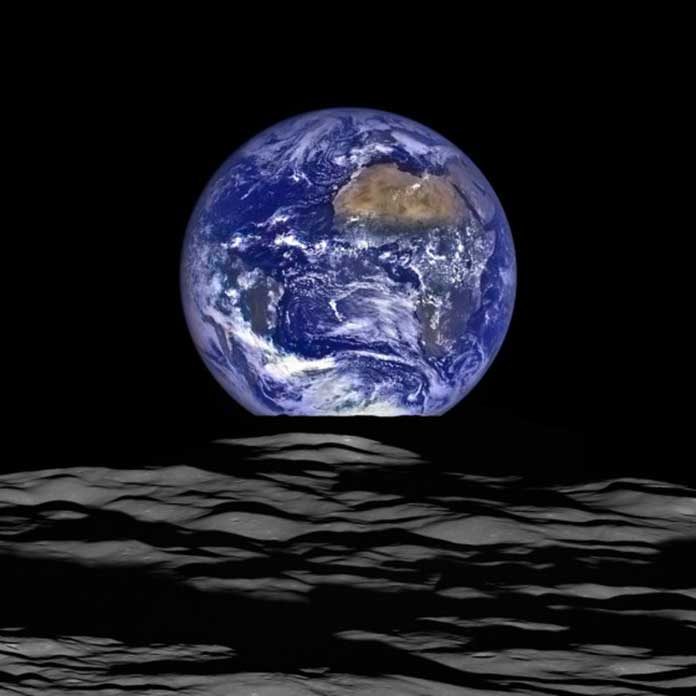Earth is the only terrestrial planet with a large amount of water and a relatively large moon, which stabilizes the Earth’s axis. Earth grew through collisions with Moon-sized to Mars-sized planetary embryos from the inner Solar System, but it also accreted material from greater heliocentric distances including carbonaceous chondrite-like bodies, the likely source of Earth’s water and highly volatile species.
Understanding when and how this material was added to Earth is critical for constraining the dynamics of terrestrial planet formation and the fundamental processes by which Earth became habitable.
Previous studies inferred very different timescales for the delivery of carbonaceous chondrite-like bodies, depending on assumptions about the nature of Earth’s building materials.
In a new study by the University of Münster, planetologists have shown that the water came to Earth with the formation of the Moon some 4.4 billion years ago. The Moon was formed when Earth was hit by a body about the size of Mars, also called Theia.
Until now, scientists had accepted that Theia began in the inner solar system near to the Earth.
In any case, scientists from Münster have now been able to demonstrate that Theia originates from the outer solar system, and it conveyed enormous amounts of water to Earth.
The Earth formed in the ‘dry’ inner solar system, and so it is somewhat surprising that there is water on Earth. To comprehend this, scientists had to go back in the time about 4.5 billion years ago. Referring past studies, scientists came to know that the solar system became structured such that the ‘dry’ materials were separated from the ‘wet’ materials: the so-called ‘carbonaceous’ meteorites, which are relatively rich in water, come from the outer solar system, whereas the drier ‘non-carbonaceous’ meteorites come from the inner solar system.
Dr. Gerrit Budde of the Institute of Planetology in Münster and lead author of the study said, “We have used molybdenum isotopes to answer this question. The molybdenum isotopes allow us to clearly distinguish carbonaceous and non-carbonaceous material, and as such represent a ‘genetic fingerprint’ of material from the outer and inner solar system.”
The measurements made by scientists show that the molybdenum isotopic composition of the Earth lies between those of the carbonaceous and non-carbonaceous meteorites, demonstrating that some of Earth’s molybdenum originated in the outer solar system. In this context, the chemical properties of molybdenum play a key role because, as it is an iron-loving element, most of the Earth’s molybdenum is located in the core.
Dr. Christoph Burkhardt, second author of the study said, “The molybdenum which is accessible today in the Earth’s mantle, therefore, originates from the late stages of Earth’s formation, while the molybdenum from earlier phases is entirely in the core.”
The study also suggested that carbonaceous material from the outer solar system arrived on Earth late.
Taking a step forward, scientists also show that most of the molybdenum in Earth’s mantle was supplied by the protoplanet Theia, whose collision with Earth 4.4 billion years ago led to the formation of the Moon. However, since a large part of the molybdenum in Earth’s mantle originates from the outer solar system, this means that Theia itself also originated from the outer solar system.
Thorsten Kleine, Professor of Planetology at the University of Münster said, “Our approach is unique because, for the first time, it allows us to associate the origin of water on Earth with the formation of the Moon. To put it simply, without the Moon there probably would be no life on Earth.”
Journal Reference
- Budde, G., Burkhardt, C., & Kleine, T. (2019). Molybdenum isotopic evidence for the late accretion of outer Solar System material to Earth. Nature Astronomy, 3(8), 736-741. DOI: 10.1038/s41550-019-0779-y
